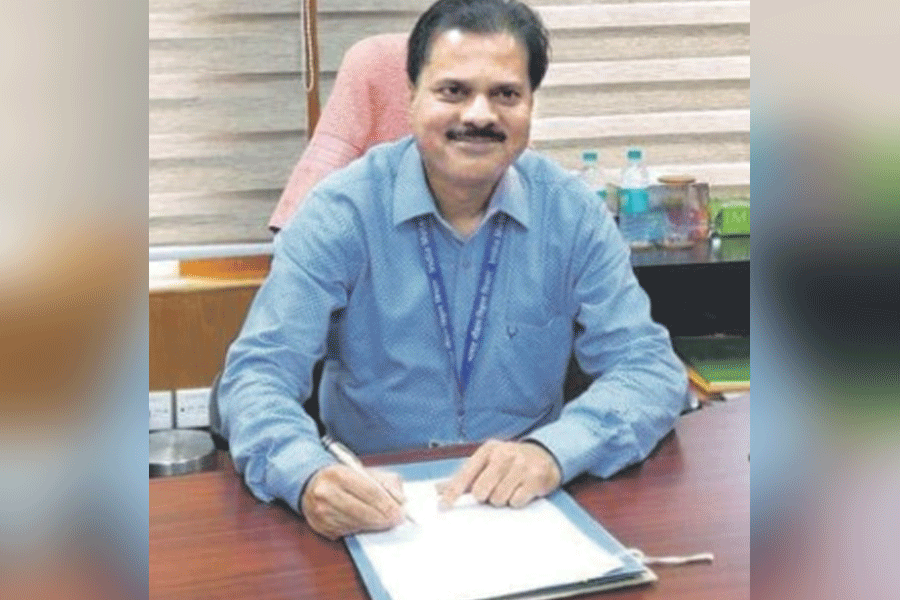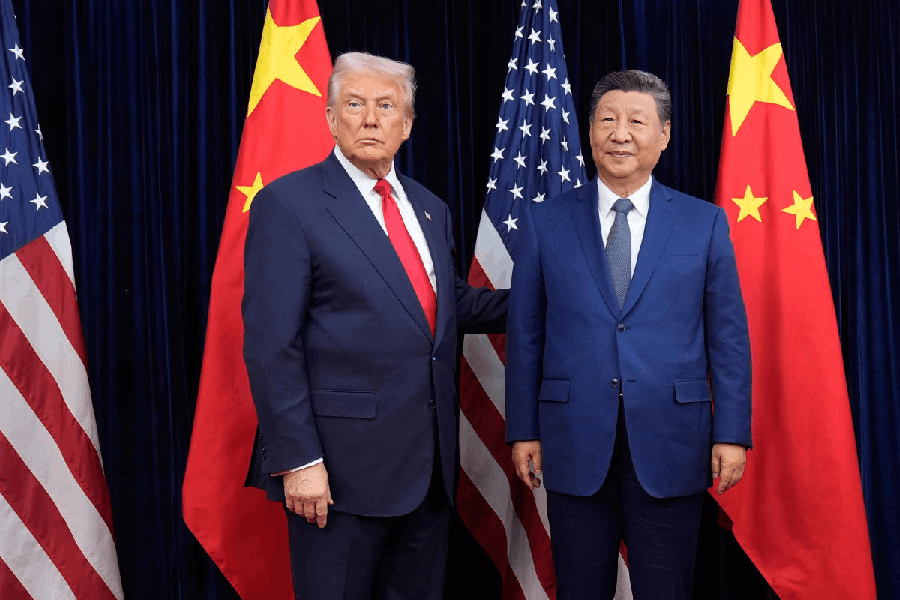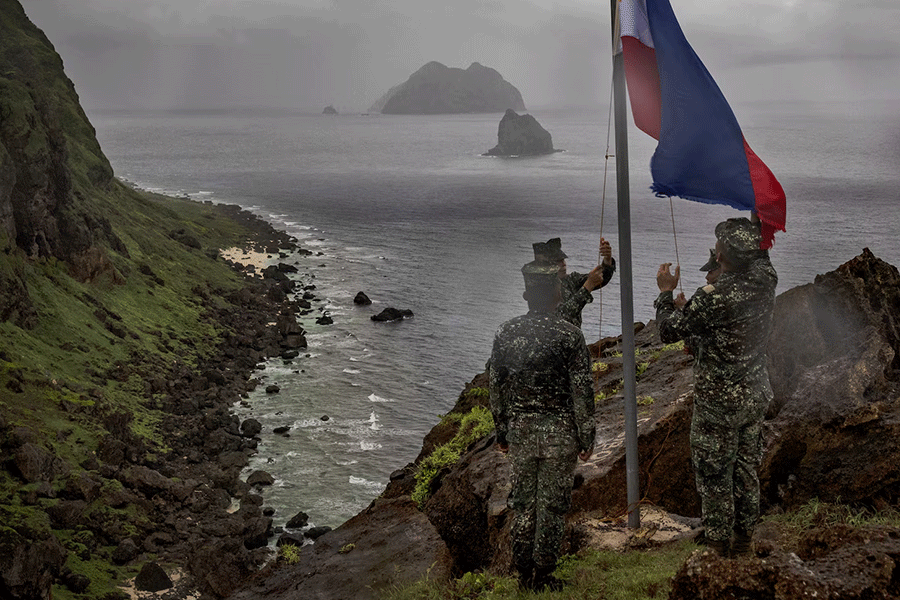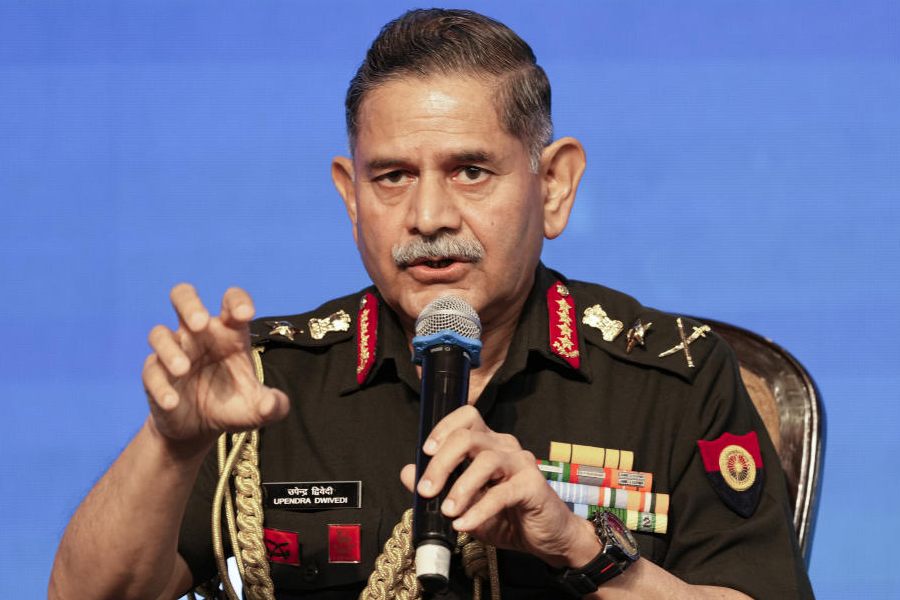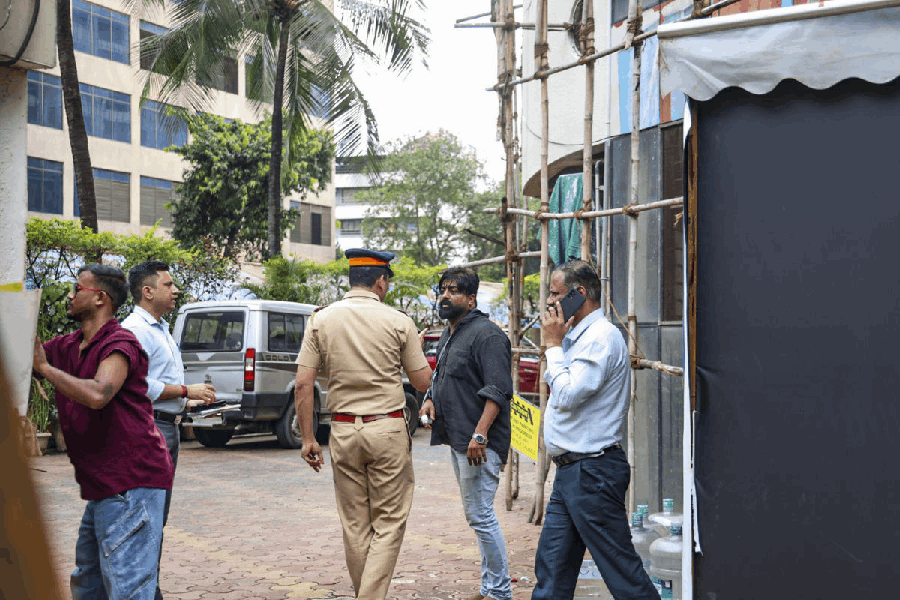 |
| La Ultra- The High - is a 222-km high-altitude race around the spectacular Khardung La, Tanglang La and Morey Plains in Ladakh |
Ahmedabad-based Vishwas Bhamburkar pricked blisters on his foot with a safety pin, hallucinated about yaks wearing electric belts and got hit by a bike while running 100-km stretches across the country. And Pune-based business analyst Aparna Choudhary wished she could exchange her feet for a new pair. She also taped her muscles to prevent injury while dashing across the Thar and had delusions about seeing villagers on a deserted road to Leh.
Runners like Bhamburkar and Choudhary are shooting off the starting lines of endurance races and are covering distances greater than 42km at one go, the traditional length of a marathon. Welcome to the world of ultramarathons where runners pound along roads and tracks for enormous distances. Besides that — and because a sleep-deprived exhausted body cuts off oxygen to the brain — they are fantasising about random stuff on the road.
Says Kavitha Kanaparthi, owner of Globeracers, an outfit promoting endurance running and cycling activities in India: “One never imagined a sport like ultramarathons would gather steam in India, but it has and how! We have quite a few awesome runners in the making in this country.” Kanaparthi organises five ultramarathons including the Thar Desert Race, the Bhati Lakes 100, the Golconda 100, the Nilgiris 100 and Himalaya Xtreme.
 |
 |
| (Above) Amit Sheth runs the Comrades every year along with wife Neepa (in the picture), and is the official Indian ambassador for the race; (top) Satish Gujaran was the fastest Indian at Comrades 2012, and would like to run in all the world’s top adventure marathons |
These long-distance running events are happening all across the nation. According to Arvind Bharati, head, Runners for Life (RFL), a Bangalore-based community of racers, there’s a strong surge in interest in this gruelling sport. “In 2008-2009, there was a huge spike in the number of marathon runners. A sizeable chunk of that group will now graduate to ultra-marathons. It’s a sport that’s set to hit a high in India,” he says. Bangalore Ultra, one of the first long-distance races held in India, was initiated by RFL in 2007 and saw 90 people participating in the 52km and 78km categories. In 2011, the outfit received 210 entries in the same categories. Right now, there are at least eight ultramarathons being organised in locations as far ranging as Leh and the Thar Desert.
Bharati lists several reasons behind the buzz around ultramarathon running. Since people are starting to run early, the next peak they are looking to scale are ultramarathons. Most claim these runs give them an endorphin high. And for a few it is simply time they can devote to themselves. Still others are finding it almost addictive and also a good place to make friends with people who share the same passion.
 |
| (Above) Runners For Life organises the Bangalore Ultra, one of the first long-distance races held in India; (left below) Aparna Choudhary admits that there aren’t many financial rewards in ultramarathon running and high registration fees can be a deterrent at times |
 |
Take a look at 43-year-old Arun Bharadwaj — the only Indian to finish California’s Badwater Ultramarathon in 2011 — who loves the sport because it allows him to travel and meet other members of the running community. “You get to know people with whom interaction in any other platform seems unlikely. It’s a mad mix of racers who love to pound the roads for fun,” he says. A veteran of 21 international ultra-marathons, Bharadwaj has travelled across the globe to destinations like Moscow, New York, Copenhagen and even crisscrossed the country to compete in races held in Chandigarh and Shimla.
Bharadwaj isn’t the only athlete going for long-haul running. Scores of other amateurs and recreational runners are gearing for the challenge. So you have Amit Sheth, a 45-year-old businessman from Mumbai, finishing the Comrades ultramarathon in South Africa three times in a row. “I planned on running the 89-km Comrades on the day I finished The Two Oceans, a 56-km ultramarathon in South Africa in 2008. After meeting veterans of Comrades at an exposition, I knew I had to do it,” says Sheth, who is the Indian ambassador for the race. Billed as the world’s largest and oldest ultra-marathon, Comrades, run in the Kwazulu-Natal province, was conceived to ‘celebrate mankind’s spirit over adversity’.
If Sheth is going all the way to South Africa to sprint across the country’s rugged trails, Vishwas Bhamburkar is gearing up for next year’s Brazil 135, a race route that stretches 135km across the Mantiqueira Mountains. Later in 2013, the 38-year-old entrepreneur will take up the challenge of Badwater, the world’s most gruelling race that stretches over 217km starting in the Badwater Basin in California’s Death Valley and ending at Mt Whitney Portal. “It will be like running through a furnace and an alpine climate in the same race but that’s exactly why I am kicked about doing it,” says Bhamburkar.
India too is turning into the epicentre of the ultramarathon movement in Asia, offering a string of events each year to choose from. With its variegated terrain, the country has an exciting range of running experiences on offer — from the Ultra India 210-km run in Kochi to Rajasthan’s Thar Desert race, a two-day, 160-km sweatfest passing through sand dunes, salt flats and steep rocky terrain.
But surpassing them all, for mixing relentless pain with picturesque locales in India, is La Ultra - The High - a 222-km high-altitude (above 13,500ft) race around the spectacular Khardung La, Tanglang La and Morey Plains in Ladakh. “At some places (in the race route) there’s a stream flowing down from melting snow capped mountains. Early in the day the stream is narrow, but as it gets hotter more snow melts and the stream gets wider, at times there is a river on the road,” says Dr Rajat Chauhan, race director, La Ultra - The High.
 |
| In 2013, Vishwas Bhamburkar will take up the challenge of Brazil 135, a race route that stretches 135km across the Mantiqueira mountains |
It’s obvious that Indian runners think nothing of doing daunting distances both across the world and on home turf. Says Mumbai-based Satish Gujaran, who had the fastest timing among Indians at Comrades 2012: “The numbers say it all. In 2012, there were 22 Indians who entered the race, out of which 18 finished. Compare this with 2010 when there were just nine registrations.” Gujaran was among the four bronze medallists from India who clocked anything between nine and 11 hours. Apart from Comrades, Gujaran’s running career features the 53-km Freedom race in Durban and Bergville Ultra Marathon in Ladysmith, both in South Africa.
Interestingly, these races, the ultimate test of resilience and mental fortitude, are drawing in regular individuals with everyday jobs. For instance, Bangalore-based Sumanth Cidambi, a finance professional, took to running just eight years ago when he tipped the scales at 110kg and had sky-high blood sugar levels.
The 42-year-old seriously needed a crash exercise programme and eventually took to endurance running. He completed the Mumbai half marathon in 2006 and several full-length marathons after that. Then, Cidambi became the first Indian to complete the Atacama Crossing in 2011, a seven-day 250-km race across the Chilean desert. “I was determined to do it to mark my 40th birthday,” he says simply.
Like Cidambi, Sheth initially had a complicated relationship with all forms of physical activity. “I loved all sports — as long as I was watching them on television with a glass of beer in my hand,” he says in his book Dare to Run. But he got off the couch in 2005 in a bid to compete in the Standard Chartered Mumbai Marathon 2006.
During his first practice session on Juhu beach, he could barely run four minutes: “I realised what a bad shape I was in. I thought I would definitely have a heart attack,” he says. Sheth now runs the Comrades ultramarathon every year along with wife Neepa and has competed in The Three Cranes Challenge — a 100-km trail through Howick Forest in South Africa — this year. Next year looks equally promising for him. He’s scheduled to run the Tokyo marathon, Peninsula Ultra Fun Run (PUFfeR) in South Africa and one around London in 2013.
So, what prompts these once sedentary souls to take off at the sound of the starter’s pistol? “Ultimately it’s the desire to not give up. But you also have the landscape to distract you. The scenery that forms the backdrop of a race of 100km or more can be both breathtaking and challenging,” says Bharati.
Take a look at La Ultra. Boasting a race route that connects two of the world’s highest mountain passes, Khardung La and Tanglang La, the Himalayan track is as scenic as it gets. Participants loop around dainty hamlets, high-altitude deserts and snow-slathered peaks.
At that height it is incredibly tough with 66 per cent less oxygen than at sea level combined with vertical ascents and descents. “At one point before Tanglang La, the road is broken and runners could easily hurtle down the slope into a raging River Indus,” says Choudhary, who was part of the support crew in the second edition of La Ultra.
Inevitably, the preparations have to be as gruelling as the final events. Bhamburkar has already taken part in two 100-mile races and does 200-km runs every five weeks to prime himself for next year’s Brazil 135. To make sure that his fitness levels will be at their peak on D-day, he mixes yoga, cycling and gym workouts. “I will be doing a double (running from start to finish and then returning) at Brazil 135 and am contemplating a triple,” he says.
Gujaran is equally exacting about his fitness drill in the run-up to marquee races. “When I’m training at the Race Course, my training schedule starts really early. I get up at 3.55am,” he says. Besides that he also does strength training by running up a hill, jogging back without rest and running uphill again.
Arun Bharadwaj’s training schedules are even more heroic. He runs between 160km and 200km per week and sleeps for just four hours daily. To avoid the sleep-deprived sensation during long-distance runs, he spends at least one sleepless night every week. “I also try and avoid taking the bus to my workplace four days a week and run instead,” says the resident of Bharthal village, Dwarka, whose office is 27km away from home.
 |
| A veteran in the sport, Arun Bharadwaj has run 21 international ultramarathons in India and abroad |
Don’t imagine these races are being undertaken only by men. Take a look at Neepa Sheth, 44, who has finished the Comrades run thrice and who, along with husband, Amit, became the first Indian couple to cross the finish line in 2010. “Nothing prepares you for long-distance running,” she says.
She trains for the Comrades by zipping off to Lonavala, hitting the roads at 2am and running for six hours straight. “A car trails me with fluid and food supplies and I try and clock around 1,000km in the three months I prepare for the race.”
Aparna Choudhary has taken part in the Thar Desert race, Bhati Lakes 100, Ultra India in Kochi and the Bangalore Ultra. Last week, she packed her bags and left for Rishikesh for the Himalaya Xtreme, a 220-km run terminating at Gangotri.
Indians who are bitten by the running bug need deep pockets. There’s no prize money and one has to reach race venues at least two days ahead to acclimatise. “There are no sponsorships and shelling out huge sums on registration fees, travel expenses and hotels is a tall order,” says Bhamburkar, who will spend close to Rs 35 lakh to compete in the Brazil 135. Says Gujaran: “If I have enough money one day I really want to run Badwater and all the adventure marathons including China’s The Great wall Marathon, The Big Five Marathon passing through the South African savannah, The Polar Circle marathon on the ice sheet of Greenland and the Solar Eclipse Marathon in Port Douglas, Australia.”
Closer to home, Choudhary says the Indian ultras are an equally big financial drain. “The registration fee for Kochi’s Ultra India race was around 1,000 euros (Rs 69,799). Since I was the first Indian to register, my fee was cut to 200 euros (Rs 14,000),” she says. Because of the high costs, Choudhary only takes part in a few select races.
Since there isn’t much cash and not even that much recognition, it’s really pure passion that drives this tribe of super athletes. Says Bhamburkar: “The nickel-plated belt buckle given to finishers of the Badwater race is every runner’s holy grail.”
Indeed, Bhamburkar and the growing clique of Indian ultramarathoners can only be defined by elite runner Scott Jurek’s words. “Sometimes we stumble from exhaustion and double over with pain. We run with bruised bones and scraped skin. It’s a hard, simple calculus: Run until you can’t run anymore. Then run some more. Find a new source of energy and will. Then run even faster.”


